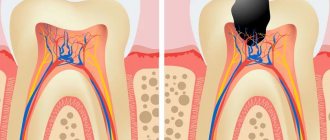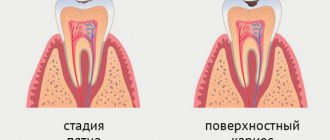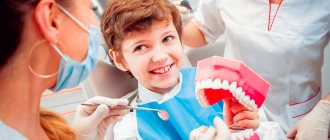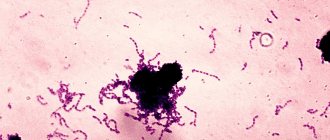Deep caries is the fourth and final stage of destruction and demineralization of hard tooth tissues. Looking at the photo of deep caries, you can immediately notice the presence of a carious hollow. From the outside it may seem small, but inside there is always significant destruction of dental tissue.
With deep caries, the carious cavity is separated from the pulp by only a narrow layer of dentin, which with further development of the disease can lead to the development of pulpitis, periodontitis or periostitis. Thus, the main task of the dentist is to preserve all the functions of the tooth and minimize the risk of developing these diseases.
Etiology
The medical history of deep caries may indicate the primary or secondary development of the disease. In the first case, it occurs due to the lack of professional treatment of the middle stage of caries, in the second - after tooth preparation (incorrect treatment, chipped filling). Otherwise, the factors stimulating the development of the disease are the same as for caries in general: poor hygiene, lack of necessary cleaning of hard-to-reach places, disturbances in pH levels, saliva composition, genetic predisposition.
In our clinic you can get a free dental consultation!
Classification
There are several types of caries for adults and children. The latter are worth mentioning separately, since the treatment of caries in children and adults is different. Varieties found in adults include:
- Fissure caries.
A disease characterized by the fact that fissures are affected - special grooves present on the surface of the teeth. Cavities form in the interdental spaces and natural recesses, which is associated with the accumulation of food debris in these places, which are extremely difficult to remove. - Cervical caries
, which affects the area around the neck of the tooth, characterized by a thin layer of enamel. This disease is sometimes called hidden caries because it is difficult to notice. - Atypical caries
is rare. This disease got its name due to the fact that it is not the most typical places that are affected - the cutting edge or the tubercle.
Secondary caries, the development of which is a consequence of improper work by the dentist, or the use of low-quality materials. This type of caries develops under installed fillings, crowns and dentures, and is often completely invisible.
Our doctors
18 years of experience
Baghdasaryan
Armen Evgenievich
Chief physician, dentist-orthopedist-therapist
Graduated from VSMA named after. N.N. Burdenko. Internship on the basis of MGMSU named after. A.E. Evdokimov in “General Dentistry”.
Clinical residency at the Moscow State Medical University named after. A.E. Evdokimov in “Orthopedics”.
More about the doctor...
5 years experience
Sadina
Ekaterina Vladislavovna
Dental therapist, surgeon
Penza State University Medical Institute, specialty “Dentistry”.
In 2016, she underwent professional retraining in the specialty “Therapeutic Dentistry” at the Moscow State Medical and Dental University named after A.I. Evdokimov.
More about the doctor...
8 years of experience
Arzumanov
Andranik Arkadievich
Dentist-orthodontist
Graduated from Moscow State Medical University. Internship - Moscow State Medical University at the Department of Orthodontics and Children's Prosthetics.
Residency at Moscow State Medical University at the Department of Orthodontics and Children's Prosthetics. Member of the Professional Society of Orthodontists of Russia since 2010.
More about the doctor...
Diagnosis of deep caries
Making a primary diagnosis of caries usually does not cause major problems due to the abundance of external symptoms and other obvious manifestations. However, this disease should be distinguished from other dental ailments:
- Average caries
Medium and deep caries are different: the bottom of the cavity with moderate damage remains denser, sensitivity is moderate. A significant gap between the affected area and the healthy pulp is also visible on the x-ray.
- Chronic pulpitis (fibrous or hypertrophic)
If the infection has penetrated inside the tooth, inflammation of the pulp may develop. As a result, the pulp tissue changes and its growth may occur. The pain is usually mild.
- Acute focal pulpitis
Acute forms of pulp inflammation, on the contrary, are characterized by sharp shooting pain, usually occurring when pressing on the bottom of the cavity. The pain may worsen at night.
- Periodontitis
There are no periodontal changes with ordinary caries. If there are signs of such changes on an x-ray or during examination, we are most likely talking not about deep caries, but about periodontitis. Having patient history data also often helps in making a correct diagnosis. As a rule, periodontitis is a consequence of a previously occurring carious process.
Clinical manifestations
Symptoms of deep caries, first of all, consist of a sharp toothache when exposed to thermal, chemical or mechanical stimuli. The pain is short-term and disappears after the stimulus is removed. If pieces of food remain in the cavity, the pain becomes aching and can last until the irritants are eliminated. If the carious cavity is extensive, the patient may develop an unpleasant putrid odor from the mouth. Caries under a filling can develop for years and is characterized by the absence of clinical manifestations. Painful sensations occur only when the dentin is destroyed to the bottom of the tooth.
Prevention of caries
It is impossible to cure caries at home, but you can prevent its occurrence. To do this, it will be useful to resort to a number of preventive measures to strengthen tooth enamel, which will increase its resistance to chemical destruction. It will be useful:
- Avoid consuming sugary foods and drinks to prevent the growth of microorganisms in your mouth. Well, if you still decide to eat them, you should regularly rinse your mouth after eating.
- Regularly use toothpastes containing fluoride to brush your teeth. This microelement strengthens the enamel, making it resistant to acid and the formation of caries.
- Using dental floss daily will effectively remove food particles stuck between your teeth that cannot be removed with a standard brush.
Strict adherence to basic hygiene rules and proper balanced nutrition will help keep your teeth and gums healthy. It would be a good idea to make a habit of regularly visiting the dentist - the disease will be noticed in the early stages of manifestation, which will avoid the need for filling.
Diagnostics
Deep caries is diagnosed during an examination by a dentist, who takes into account the patient’s complaints, examination results, thermal diagnostics and radiography data. Differential diagnosis of deep caries requires distinguishing it from the following diseases:
- periodontitis;
- pulpitis;
- average caries.
Acute deep caries
Like many other diseases, deep caries can occur in acute and chronic forms. The acute form is characterized by rapid development with pronounced decompensation. The dynamics of destructive processes in acute caries significantly exceed the compensatory capabilities of the body and the rate of restoration of affected tissues. As a result, the patient rapidly develops significant and deep damage to the dental tissues.
One of the most characteristic features of acute caries is the presence of sharp, severe pain. It can appear independently or as a reaction to temperature exposure (hot and cold liquids, food), mechanical stimuli (biting, pressure, friction), caustic environments (acids, salty, sweet). Even after stopping contact with the irritant, pain often persists for some time.
A dental examination reveals the presence of a deep, extensive cavity, often with a narrow entrance and a wide base. On its walls, deposits of decay products are often observed - white and loose. When pressing on the bottom of the cavity, sharp pain occurs.
Treatment
Treatment of deep caries is carried out in several stages and sometimes requires two visits to the dentist. The latter is necessary if the dentist is not sure that the disease has not affected the pulp. In this case, the treatment plan includes the following:
- treatment of the carious cavity and removal of all affected tissues;
- applying an insulating pad;
- installation of a temporary filling;
- a second visit after three to four days and installation of a permanent filling if there is no pain.
If pain symptoms are present and increasing, pulpitis is treated.
How to treat caries?
For treatment, you need to go to a dental clinic, since it is simply impossible to get rid of this disease at home. There is no point in postponing a visit to the dentist because early treatment will be faster, easier and cheaper.
This disease is very common, so the process of treating it at any stage does not cause difficulties for the dentist. At the initial stage, the entire procedure of medical intervention is limited only to cleaning the affected areas of the enamel using special tools and subsequent restoration of the structure.
At the middle stage, caries treatment involves removing the affected tissue, disinfecting the resulting cavity, filling it and subsequent processing, giving the restored tooth its original appearance.
Removing caries at a deep stage is often complicated by the fact that the walls of the tooth are too thin for which it is impossible to install a filling. In this case, you have to grind down the remaining parts in preparation for installing the crown.
Caries of the front teeth is treated in exactly the same way as in the case of other teeth, with the exception that photo fillings are necessarily used here, which can not stand out from the general background.
Where to treat?
You can undergo treatment for deep caries at the Good Hands dental clinic. Our specialists will make every effort to save the tooth and carry out its restoration, maintaining its appearance and functionality. It is very important to seek professional dental care in a timely manner in order to prevent the development of pulpitis and periodontitis, which can lead to tooth loss. Our specialists use effective anesthetics and modern equipment in their work. Thanks to this, the treatment will be comfortable and painless. Book a free consultation with us by filling out the simple form on this page or calling us!
Causes of caries
Multiplying carious bacteria, feeding on food debris on the teeth and releasing acidic products, slowly destroy the enamel. The disease develops at different rates in different people. It's connected with:
- Heredity.
It has a strong influence on the composition and structure of dental tissues, and if parents suffered from manifestations of the disease, then with a high degree of probability this will also be characteristic of their child. - Food.
Carious bacteria feed mainly on sucrose and a number of other complex carbohydrates, and eating sweets can lead to their rapid growth, an increase in the amount of waste products and to the decay of enamel. - Features of the immune system.
Often, caries develops after a person has suffered respiratory diseases, which is associated with weakened oral immunity, which causes the proliferation of microorganisms. - Brushing your teeth.
Many people neglect this hygiene procedure, or do it irregularly and for show. This leads to the formation of plaque, which is a favorable environment for the proliferation of microorganisms. - Profession.
People who work in enterprises associated with the production of chemicals are statistically more likely to become ill. - Geography.
The percentage of fluoride in drinking water, which is responsible for strengthening tooth enamel, leads to an uneven spread of the disease depending on the region.
PREVENTIVE ACTIONS
To reduce the risk of pathology formation, it is important for patients to perform secondary prevention of caries:
- install composite inlays and crowns from modern materials;
- follow all the specialist’s recommendations during and after treatment;
- when identifying the first violations of the structure of the material, it is important to make an appointment with a doctor;
- come for preventive examinations once every six months, even without obvious complaints.
Compliance with all simple rules will make it possible to minimize the risk of a secondary process. It is important to find an experienced doctor to perform treatment. That is why, when choosing a clinic, you should pay attention to prices, patient reactions after an appointment, and the qualifications of doctors.
By making an appointment with us at West Dental, you make your choice to use the best specialists and high-tech equipment and perform treatment procedures with modern materials, so the occurrence of secondary pathology will be minimal.
CONSEQUENCES OF UNTIME TREATMENT
If you suspect the presence of a carious process under a filling, you should immediately make an appointment with a dentist. To register with West Dental, you can go to our website and fill out the feedback form or call the numbers provided. Failure to eliminate the pathology in a timely manner can be dangerous due to:
- Damage to the jaw bone. Inflammation can affect all bone structures.
- Destruction of the tooth root with a root canal. If the roots are damaged, the only answer to solve the problem is to extract the unit.
- Transfer of the pathological process to neighboring units that were completely healthy.
- Large area of destruction of the crown and root parts of the tooth.
A great danger in the secondary process is inflammatory diseases of the pulp chamber and its further death. This can occur due to the use of chemical solutions during drug treatment and traumatization with burs.
Factors and mechanics of development
One of the factors that determines the difficulty of treating secondary caries is the absence of severe symptoms. Determining the reasons that caused the re-development of the pathological process also poses a problem. Typically, such factors include:
- Mistakes made by the doctor who treated pulpitis of temporary or permanent teeth. A common problem is poor cleaning of the carious cavity before filling;
- Loose fit of filling material, leading to the formation of a free gap. The presence of space causes deformation of the structure under mechanical loads, provoking the appearance of cracks and chips. In addition, cavities in dental tissue contribute to the accumulation of pathogenic microbes and bacteria that cause caries;
- Wearing of a previously installed seal. The development of the service life leads to the launch of destructive processes that reduce the protective functions of the element and open access to the internal tissues of the tooth.
Secondary caries most often occurs at the junction of the filling with the dental tissue. In the initial phase, the problem is characterized by the formation of gaps and scratches, through which microbes and bacteria are introduced into the unit, and in the case of large cavities, food particles that gradually decompose in the oral cavity. Acidic elements released as a result of the development of pathogens corrode the enamel structure, damage dentin and provoke pulpitis - as a result, the patient is prescribed repeated tissue removal and root canal treatment.
However, it would be wrong to say that secondary caries is solely a consequence of medical negligence. Much depends on the patient’s compliance with the instructions given after the initial treatment. Common mistakes made during the recovery period include:
- Systematic consumption of excessively hot or cold food, which results in a tissue reaction to temperature changes, leading to the formation of cracks in the base structure;
- Including hard and hard foods in the diet, as well as maintaining bad habits, including smoking and love for toothpicks;
- Violation of the rules of hygienic oral care, leading to the accumulation of a significant amount of pathogenic bacteria that corrode weakened enamel.
By adhering to medical recommendations, you can promptly identify the prerequisites for the development of secondary caries, as well as avoid its development.
Complications
Untimely treatment of caries leads to inevitable complications:
- development of pulpitis (the carious process gradually spreads to the deep layers of dentin surrounding the pulp of the tooth);
- if pulpitis is not treated, necrosis of the pulp occurs (i.e. it dies), as a result, a focus of inflammation appears at the apex of the tooth root;
- development of gum “flux” (a purulent process occurs between the jaw and periosteum);
- the appearance of a cyst at the apex of the tooth root (the bone tissue is resorbed, and inflammation forms in its place).











